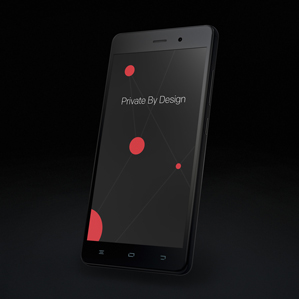What Happened to Ultraprivate Smartphones?
A year ago, a new kind of smartphone emerged with encryption and other data protection technologies set up by default. These ultraprivate phones were one of MIT Technology Review’s 10 Breakthrough Technologies in 2014, because they made it far easier for everyday people to shield their personal information from hackers, thieves, intrusive marketers, and perhaps even government spies. One device, the Blackphone, had a modified version of the Android operating system called PrivatOS. It was developed by a joint venture that included Silent Circle, a software company cofounded by a prominent cryptologist named Phil Zimmermann. So how are these new phones doing on the market?

Phones to market
Last year, Zimmermann said that hundreds of thousands of people had ordered the Blackphone, which went on sale for $629 last summer. Today, Bill Conner, the company’s CEO, won’t give updated figures. A Dutch telecommunications company, KPN, sells the Blackphone; otherwise it can be bought online and used on networks with the Global System for Mobile Communications (GSM) standard.
A new version that will cost around $700 is coming out this July, Conner says. The Blackphone 2 will include a faster processor, three times the memory, longer battery life, and a bigger display. A tablet called the Blackphone+ will follow a few months later.
Both devices will have a new version of PrivatOS that could make the device more user-friendly. For security purposes, Silent Circle recommends that Blackphone owners only use apps that come pre-loaded on the device or are sold in its own app store—leaving out many popular social-media and gaming apps that might request personal information from users. The new operating system, however, will allow people to use these common apps without giving them access to sensitive information, which will be stored in another section of the phone.
Silent Circle recently raised $50 million in funding and used part of the money to buy out the Spanish smartphone maker Geeksphone, which helped it develop the first device. It is also selling encrypted voice and texting apps for iPhones or Android devices.
Though it’s not clear how much demand there has been for the Blackphone, it does have competition. The Boeing Black smartphone, announced around the same time as Silent Circle’s, is now used by defense and government customers. Meanwhile, ESD America sells a device called the CryptoPhone. When two callers both use CryptoPhones, their devices create keys based on background noise that secure the conversation. CEO Les Goldsmith would not give sales numbers, although the company said in March 2014 that about 100,000 of the handsets were in use worldwide (see “For $3,500, a Spy-Resistant Smartphone”).
Similarly, a company called Secusmart has a secure version of a BlackBerry Z10 that costs 2,000 euros and was originally designed for German government officials. That phone is outfitted with an encrypted microSD card that keeps users’ personal and work information separate and encrypts voice and data communications. The company will also release a high-security version of the Samsung Galaxy Tab this year.
Software and apps
Many people want to make their communications safer but do not necessarily want to shell out several hundreds or thousands of dollars for a super-safe phone. To serve this market, several companies have come out with apps that, like Silent Circle’s, can better shield texts and calls on mass-market devices from eavesdroppers.
For instance, Secusmart—which BlackBerry bought last year—has partnered with Vodafone to release a secure calling app for iPhone 6 or Galaxy S5 devices. For a monthly fee of 14.95 euros, companies in Germany can add the app to their employees’ devices and encrypt voice calls with temporary keys that disappear from the device after the call. The company plans to expand that service to other countries soon.
There’s also a push to make apps inherently safer. Open Whisper Systems, a nonprofit software company that offers private messaging and calling apps anyone can download on iOS and Android phones, announced last November that it would incorporate its encryption protocol into the messaging service WhatsApp, which has 800 million active users.
The Takeaway:
Several types of super-secure smartphone have now come to market, and manufacturers like Blackphone are working to make the safest devices function more like regular phones by allowing the use of common apps. These companies are also releasing apps that can make store-bought devices less vulnerable to snoops. However, as Silent Circle’s Conner points out, no device is totally unbreakable.
Do you have a big question? Send suggestions to questionoftheweek@technologyreview.com.
Keep Reading
Most Popular
Large language models can do jaw-dropping things. But nobody knows exactly why.
And that's a problem. Figuring it out is one of the biggest scientific puzzles of our time and a crucial step towards controlling more powerful future models.
The problem with plug-in hybrids? Their drivers.
Plug-in hybrids are often sold as a transition to EVs, but new data from Europe shows we’re still underestimating the emissions they produce.
Google DeepMind’s new generative model makes Super Mario–like games from scratch
Genie learns how to control games by watching hours and hours of video. It could help train next-gen robots too.
How scientists traced a mysterious covid case back to six toilets
When wastewater surveillance turns into a hunt for a single infected individual, the ethics get tricky.
Stay connected
Get the latest updates from
MIT Technology Review
Discover special offers, top stories, upcoming events, and more.